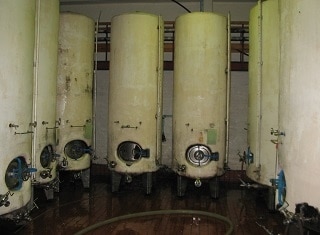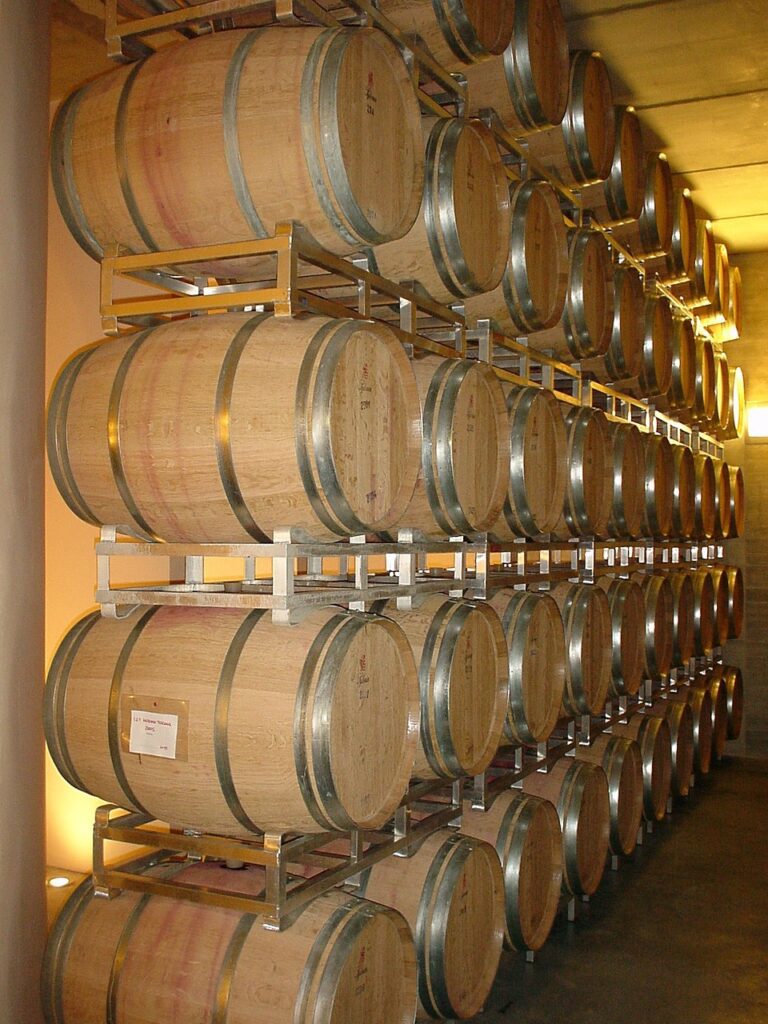
The traditional cold stabilisation of tartrates is gradually replaced.
Consumers’ preference for wine is determined by different factors. One of them is its physical appearance. The wine colour and degree of clarity, also known as its condition, need attention. Most consumers require a clear wine, without any turbidity, sediment or crystals. Tartrate crystals, also known as wine diamonds, looking like glass particles, are harmless, but unacceptable for most consumers. The tartrate stabilisation of wines can prevent it.
Cellars used different stabilisation methods over recent years to remove excess tartrates from wines. The formation of excess tartrate crystals can also be prevented by addition of certain additives. Three companies have however recently developed new technology to ensure the tartrate stability of wines.
Padovan redesigned their so-called K-stop equipment to improve the traditional tartrate stabilisation by cooling. It is a mobile compact design with different capacities of 2 000 to 20 000 litres wine per hour for seven days full-time weekly. Only three to five hours are required weekly to clean it. Minimal supervision is required and is not necessary to clean it between the processing of the same type of wine. A glycol source of -8°C is required and the wine is cooled over two stages to the stabilisation temperature, before it is kept in a reaction chamber for 90 to 120 minutes. The stabilisation is monitored with a conductivity probe. The calibration of the probe is pre-determined for each wine. As soon as initial stabilisation is obtained, the cooled wine flows via the supply tank to pre-cool the untreated wine. Eighty percent energy recovery can be obtained in this way. The removal of the precipitated bitartrate crystal from the processed wine is the next stage of the process. A dual combination filter is used to ensure continuous filtration in order to clean one, while the other one is used for filtration. Up to 95% of the bitartrate crystals can be recovered. Before wine can be stabilised by K-stop, it must be heat stable and filtered to NTU-level of one to two.
Padovan’s Ambra equipment is a new version of ion exchange, which is one of the present tartrate stabilisation methods. The potassium and calcium ions are removed from the wine and replaced by a hydrogen ion from the resin. As a result of that the precipitation of excess tartrate is prevented. The hydrogen ion, which is however released in the wine, causes an increase in the titratable acid concentration and consequent decrease in the pH of the wine. Cellars will consequently rather process some of the unstable wine and blend it with the resulting unprocessed wine to a level below the instability of the wine. The acid increase and pH decrease can also not be corrected by anion exchange, because that will also remove other acids from the wine. Ambra is consequently rather recommended to lower the pH of juices, originating from warmer regions, to a more acceptable level in order to make more balanced wines from it.
Oenidia’s STARS XF mobile equipment uses electrodialysis for the tartrate stabilisation of wines. Wine is passed through two types of membranes, which are arranged in pairs. An electric current flows over the membranes. Bitartrate anions, potassium and calcium cations are consequently removed from the wine, which prevent the precipitation of excess tartrates in the wine. The liquid waste, which contain the removed anions and cations, can be a problem. Oenodia has consequently created a reverse osmosis system in the latest equipment to solve the problem.
Della Toffola initiated a project based on reverse osmosis membranes. The greatest advantage of it is time and energy savings, as well as better water management. The flow rate of the process is 4 000 to 4 500 litres per hour for 22 hours daily. The system consists of two sets of reverse osmosis membranes, which function in series. The unprocessed, unstable wine is transferred to the first membrane set and its retentate is transferred to the second membrane set to obtain a more concentrated product, which is transferred to a concentration tank. Tartrate crystallisation will take place as a result of the concentration. After the concentration tartrate crystals will form as a result of it. Filtration from the concentration tank recovers the crystals and the mixing of different retentates and permeates will result in a stable wine. The equipment is self-maintaining and has a low water and energy use. The flow rate of the equipment is however decreased by sweetened wines and the process is consequently not recommended for wines with a residual sugar concentration higher than 50 to 60 gram/litre. The method is however also suitable for red wines, since cooling is not applicable and colour losses are consequently limited. Cleaning processes are simple seeing that a CIP (“Cleaning in place”) system is built in. A complete cleaning cycle lasts 3.5 hours.
Della Toffola’s DTX equipment is an ion exchange system where potassium ions are selectively removed and consequently increase the titratable acid concentration and decrease the pH. Capacities of 2 000 to 10 000 litres per hour is available and 600 to 2 800 litres water is required for regeneration. If it is used for juice, the sulphur dioxide addition is decreased as result of the pH decrease. Colour will also be stabilised and a smooth malolactic fermentation (MLF) is ensured. If it is used for wine, the wine need not to be filtered before the process and tartrate stability will be obtained. Wine with a higher titratable acid concentration and lower pH with all its resulting advantages will also be obtained (Carey, 2020).
Although the three processes are innovative equipment, the principles which are applied were already used in the past. Cellars must consequently think thoroughly which process(es) and/or additives are used for tartrate stabilisation. Its legality and cost are determining factors, which need to be considered.
Reference
Carey, R., 2020. New ways to stabilize tartrates in wine. Wine Business Monthly, August 2020: 34 – 39.













